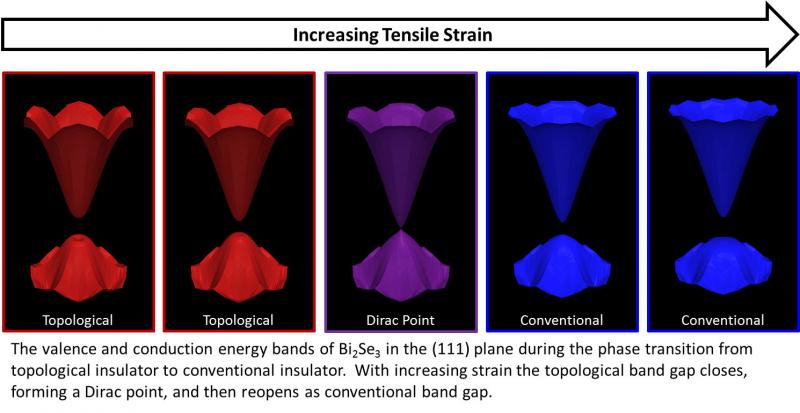Recent physics research shows how spin-orbit coupling can rearrange electronic bands in a solid to make a "topological insulator" a new quantum phase of matter that is guaranteed to have conductive surfaces even though its bulk is insulating. What happens if you take a topological insulator and compress or expand it? A team of researchers at the University of Pennsylvania has examined this question. They find that if you expand the material enough, you can manipulate the Dirac points in the electronic structure and force the material to revert to a conventional insulator. The authors contrast the effects of mechanical stress with "chemical stress" induced by replacing ions with similar ions of larger size. They find that chemical stress is more complicated than mechanical stress, and that the specific chemistry of each ion in the material determines its topological band structure. This gives new guidance for how to harness this new state of matter for applications in spintronics, catalysis, and quantum computing.

The Valence and conduction energy bands of Bi2Se3 in the (111) plane during the phase transition from topological insulator to conventional insulator. With increasing strain the topological band gap closes, forming a Dirac point, and then reopens as conventional band gap.